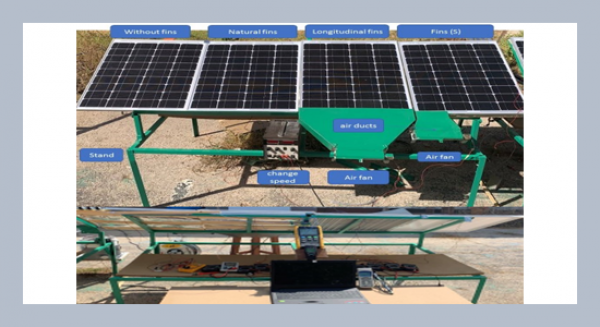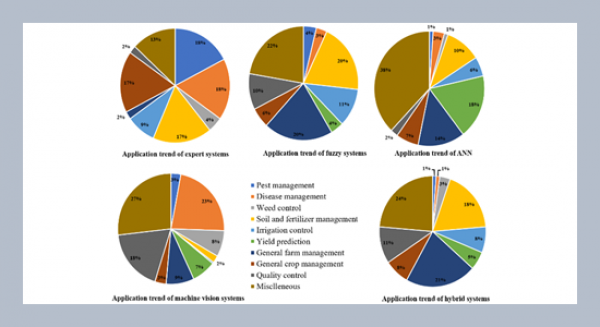REFERENCES
- Antunes, A.D.S., Triques, C.C., Buzanello-Martins, C.V., Mateus, G.A.P., Bergamasco, R. Fagundes-Klen, M.R., 2021. Influence of bionanoparticles to treat a slaughterhouse wastewater. Environmental Technology, 1–17.
- AOAC, 1990. Official Methods of Analysis. 15th Edition, Association of Official Analytical Chemist, Washington DC, USA.
- APHA, AWWA, WEF, 1999. Standard Method for the Examination of Water and Wastewater. 20th edition Washington, DC, USA: America Public Health Association(APHA), American Water Works Association(AWWA), Water Environment Federation (WEF).
- Birima, A., Hammad, H., Desa, M., Muda, Z., 2013. Extraction of natural coagulant from peanut seeds for treatment of turbid water.. IOP Conference Series: Earth and Environmental Science. 16, 1–5.
- Bratby, J., 1980. Coagulation and flocculation With an emphasis on water and wastewater treatment. England: uplands press LTD.
- Chandran, A., George, D., 2015. Use of papaya seed as a Natural Coagulant for water purification. International Journal of Scientific Engineeering and Research (IJSER), 6, 41–46.
- George, D. Chandran, A.J., 2018. Coagulation performance evaluation of papaya seed for purification of river water. International Journal of Latest Technology in Engineering, Management and Applied Science, 7, 50–66
- Effendi, H., Sari, R.D., Hasibuan, S., 2015, April. Moringa oleifera as coagulant for batik effluent treatment. In 35th Annual Conference of the International Association for Impact Assessment, Firenze Fiera Congress and Exhibition Center, Florence.
- Ejimofor, M., 2021. coagulation treatment of paint wastewaterby novel chito-protein and conversion of post treament sludge to biogas and carbondioxide. s.l.:PhD Thesis (Nnamdi Azikiwe University, Awka)
- EWURA, 2014. Water and Wastewater Quality Monitoring Guidelines for Water Utilities, 20. http://extwprlegs1.fao.org/docs/pdf/tan182368.pdf
- FAO, 2019. Protecting people and animals from disease threats. Food and Agriculture Organisation of the united Nations. https://www.fao.org/3/i8747en/I8747EN.pdf
- Ghebremichael, K. A., Gunaratna, K., Henriksson, H., Brumer, H., Dalhammar, G., 2005. A simple purification and activity assay of the coagulant protein from Moringa Oleifera seed. Water Research, 39, 2338–234.
- Gidde, M.R., Bhalerao, A.R., Malusare, C.N., 2012. Comparative study of different forms of moringa oleifera extracts for turbidity removal. International Journal of Engineering Research and Development, 2, 14–21.
- Igwegbe, C.A., Onukwuli, O.D., 2019. Removal of total dissolved solids (TDS) from aquaculture wastewater by coagulation-flocculation process using Sesamum indicum extract: effect of operating parameters and coagulation-flocculation kinetics. The Pharmaceutical and Chemical Journal, 6, 32–45.
- Kajura, H.M., 1999. The national environment (standards for discharge of effluent into water or on land) regulations. National Environment Act, nema.go.ug/sites/all/themes/nema/docs/effluent_discharge_regulations.pdf.
- Kang, J., Trevino, J., 2017. Evaluating moringa oleifera, papaya and pumpkin seed as a natural coagulant. International Journal of Life Sciences research, 5, 126–131.
- Khodapanah, N., Ahamad, I., Idris, A., 2013. Potential of using bio-coagulants indigenous to Malaysia for surface water Clarification. Research Journal of Chemistry and Environment, 17, 70–75.
- Lagasi, J.E., Agunwamba, J.C., Aho, M., 2014. Comparative studies on the use of ordinary and de-oiled Moringa oleifera in the treatment of abattoir waste water. The International Journal of Engineering and Science, 3, 1–7.
- Madhukar V.J., Yogesh S.M., 2014. Assessment of feasibility of natural coagulants in turbidty removal and modeling of coagulantion process. Desalination and Water Treatment, 5812–5821.
- Maurya, S., Daverey, A., 2018. Evaluation of Plant - based natural Coagulants for municipal wastewater treatment. 3 Biotech, 8, 77. https://doi.org/10.1007/s13205-018-1103-8
- Menkiti, M.C., Igbokwe, P.K., Ugodulunwa, F.X., Onukwuli, O.D., 2008. Rapid coagulation/flocculation kinetics of coal effluents with high organic content using blended and unblended Chitin Derived Coagulants (CSC). Research Journal of Applied Sciences, 3, 317–323.
- Menkiti, M.C., Nwoye, C.I., Onyechi, C.A., Onukwili, O.D., 2011. Factorial optimization and kinetics of coal washery effluent coag-flocculation by moringa oleifera seed biomass. Advances in Chemical Engineering and Science, 125–132.
- Menkiti, M.C., Okoani, A.O., Ejimofor, M.I., 2018. Adsorptive study of coagulation treatment of paint wastewater using novel brachystegia eurycoma extract. Applied Water science, 8:189.
- Menkiti, M.C., Sekeran, G., Ugonabo, V.I., Menkiti, N.U., Onukwuli, O.D., 2016. Factorial optimization and Kinetic studies of Coagulation-flocculation of brewery effluent by crab shell coagulant. Journal of the Chinese Advanced Materials Society, 4:1, 36–61, DOI: 10.1080/22243682.2015.1048287
- Menkiti, M.C., Nnaji, P.C., Onukwuli, O.D. 2009. Coag-flocculation kinetics and functional parameters response of periwinkle shell coagulant (PSC) to pH variation in organic rich coal effluent medium. Nature and Science, 7, 1–18.
- Nwabanne, J.T., Obi, C.C., 2019. Coagulation-flocculation performance of snail shell biomass in abattoir wastewater treatment. Journal of Chemical Technology & Metallurgy, 54.
- Odey, John., 2009. Federal Republic of Nigeria Official Gazette. Short Title; National Environmental (Sanitation and Wastes Control) Regulations 2009. Printed and Published by The Federal Government Printer, Lagos, Nigeria FGP 112/102009/1,000 (0L 54).
- Okey-Onyesolu, C.F., Onukwuli, O.D., Okoye, C.C., Ejimofor, M.I. 2018. Deturbidization of abattoir wastewater with extracted egg shell chito-protein via coagulation process. International Conference Proceedings of the Faculty of Engineering. Nnamdi Azikiwe University, Awka, Nigeria, 271–281.
- Okey-Onyesolu, C.F., Onukwuli, O.D., Ejimofor, M.I. Okoye, C.C., 2020. Kinetics and mechanistic analysis of particles decontamination from abattoir wastewater (ABW) using novel Fish Bone Chito-protein (FBC). Heliyon, 6, e0446
- Okolo, B.I., Nnaji, P.C., Menkiti, M.C., Onukwuli, O.D., 2015. A kinetic investigation of the pulverized okra pod induced coag - flocculation in treatment of paint wastewater. American Journal of Analytical Chemistry, 6, 610–622.
- Okuda, T., Baes, A.U., Nishijima, W., Okada, M., 2001. Isolation and characterization of coagulant extracted from moringa Oleifera seed by salt solution. Water Research, 35, 405–410.
- Prakash, N.B., Sockan, V., Jayakaran, P., 2014. Wastewater treament by coagulation and flocculation. International Journal of Engineering Science and Innovative technology (IJESIT), 3.
- Purss, A., Kay, D., Fewtrell, L., Batram, J., 2002. Estimating the burden of disease from water sanitation and Hygiene at a global level.. Environ Health perspectives, 110, 537–542.
- IR Spectrum Table & Chart. 2020. Merck. Retrieved May 11, 2020, from https://www.sigmaaldrich.com/NG/en/technical-documents/technical-article/analytical-chemistry/photometry-and-reflectometry/ir-spectrum-table.
- Sonntag, H., Strenge, K., 1987. Coagulation Kinetics and Structure Formation. New York: Springer Science + Business media, LLC.
- Tsamo, C., Zama, E.F., Yerima, N.E., Mandela Fuh, A.N., 2021. Comparing the coagulation performance of rice husk, cypress leaves, and Eucalyptus leaves powders with that of alum in improving the turbidity and pH of some local water sources in Bamenda, Cameroon. International Journal of Chemical Engineering, 2021, Article ID 6858936. https://doi.org/10.1155/2021/6858936.
- Van-Zanten, J.H., Elimelech, M., 1992. Determination of absolute coagulation rate constants by multiangle light scattering. Journal of Colloid and interface Science, 154, 1–7.
- Vishali, S., Karthikeyan, R., 2014. A comparative study of strychnos potatorum and chemical coagulants in the treament of paint industrial effluents: an alternate solution. Separation Science and Technology, 49:16, 2510–2517, DOI: 10.1080/01496395.2014.931098.
- Weberich, T., Amaral, A., Schineider, R.M., Bongiovani, M.C., 2016. Coagulation/flocculation of slaughterhouse wastewater using cottonseed as coagulant. Nativa, Sinop, 4, 134–138. DOI: 10.14583/2318-7670.v04n03a03 http://www.ufmt.br/nativa.
- WHO, UN-Habitat, 2018. Progress on safe treatment and use of wastewater: piloting the monitoring methodology and initial findings for SDG indicator 6.3.1., Geneva: World Health Organization and UN-Habitat.
- Yin, C.Y., 2010. Emerging usage of plant-based coagulants for water and wastewater treatment. Process Biochemistry, 45, 1437–1444.















